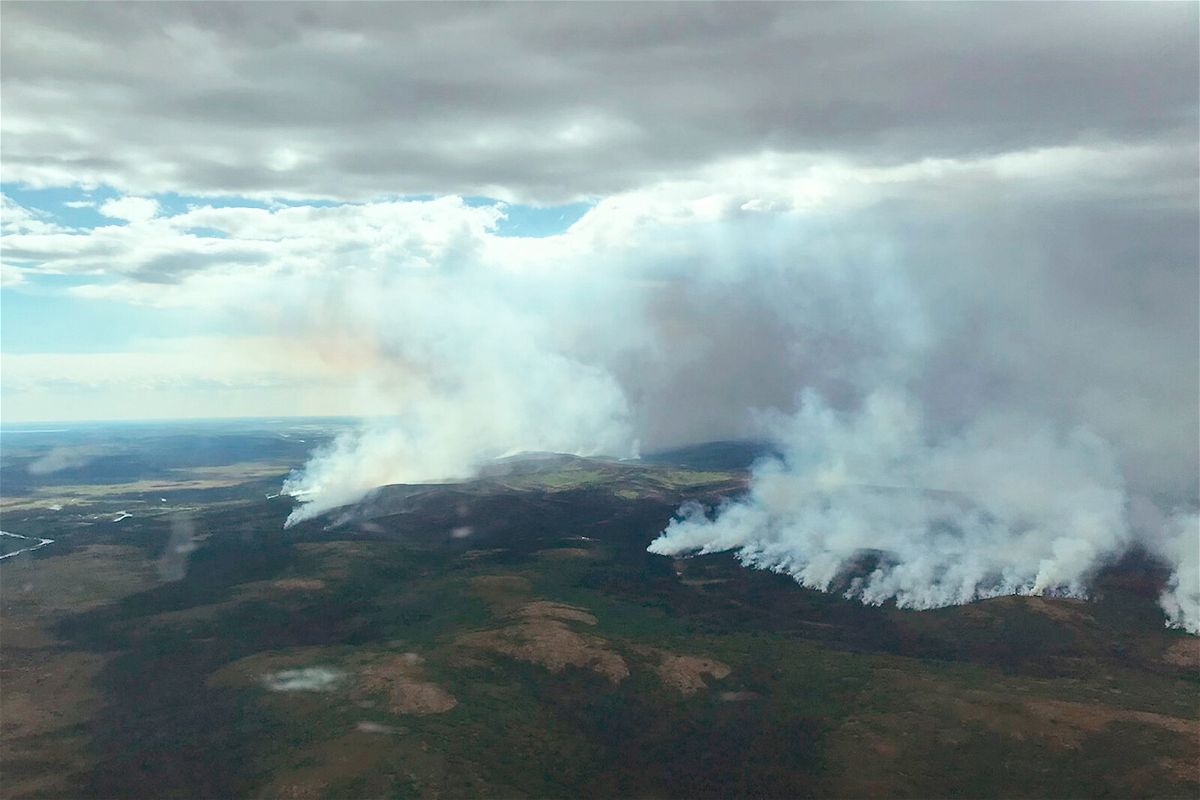Largest fire burning in Alaska started from lightning as the state braces for excessive lightning today and tomorrow

The East Fork Fire
By Haley Brink, CNN meteorologist
A serious warning has been posted by the National Weather Service office in Fairbanks, Alaska, this weekend, stating that “significant lightning” is expected both Sunday and Monday across portions of the state already dealing with large, active fires.
On Saturday, Alaska and its neighboring territories recorded over 5,800 lightning strikes and even more lightning is expected in the coming days.
An additional 5,000 to 10,000 lightning strikes are expected on Sunday and then again on Monday, the weather service in Fairbanks said.
“On a more normal thunderstorm day, we see closer to 1,000 and 3,000 (lightning strikes),” Erin Billings, meteorologist at the NWS in Fairbanks told CNN.
“This weekend into early next week, we will get these pieces of energy that swing up north across the Alaska range, which really enhance the development of thunderstorms and lightning across our interior,” Billings added.
Red flag warnings are in place today across portions of the state including Fairbanks, specifically due to this large amount of lightning.
The lightning activity on Sunday is forecast to be a Level 4, meaning frequent lighting is expected and 11 to 15 cloud-to-ground strikes could occur in a five-minute period, according to the weather service.
The weather service office mentioned that these warnings may need to be extended into Monday.
These cloud-to-ground lightning strikes are very concerning when it comes to sparking new fires. “A lot of our fires are from lightning,” said Billings.
The Bean fire, which is located in central Alaska, west of Fairbanks, started from lightning that happened between June 19 and June 23 and has burned over 100,000 acres.
Lightning also caused the Lime Complex, which is currently the largest fire burning in the state, consuming more than 775,000 acres as of Saturday night.
The state is at its highest level of fire preparedness with more than 2 million acres burned this year as of early Sunday morning, according to the National Interagency Fire Center and the Alaska Interagency Coordination Center Wildland Fire Dashboard.
At least 1.7 million of those acres have burned from lightning induced fires alone.
This year is on trend to be one of the largest fire seasons on record.
“In a typical year, it’s a little over a million acres for the entire season,” climate scientist Brian Brettschneider said.
Fire season in Alaska typically starts the last week of May and runs through mid-August.
“We are in the peak of our thunderstorm season but as we progress into late July and August, we transition to more southwesterly flow which tends to shut off our thunderstorm season,” Billings said.
The models continue to delay the forward progress of this trough, or area of active weather, which in turn is delaying cooler and wetter southwesterly flow, the NWS Fairbanks four- to seven-day weather discussion said.
Alaska’s hope for relief is the wet season, which usually starts in late July.
“This wildfire season could grow to be historical if the wet season is delayed,” Rick Thoman, a climate specialist at University of Alaska-Fairbanks said. “We’ve got enough fire now that realistically, it’s going to take a while to put this out.”
Thoman said the weather pattern will remain the same this week as temperatures remain above 60. However, cooler and wetter weather may be on the way later this month — indications from the Climate Prediction Center shows cooler and wetter conditions could arrive to the state as early as mid-July.
But much of southwestern Alaska is also experiencing moderate drought, which will continue to fuel wildfires.
“We’ve been urging Alaskans to be very wary of local burn bans, which have been in place for weeks now,” said Joe Wegman, a meteorologist for the NWS in Anchorage. “There’s definitely concern for the Fourth of July and if there will be more human-caused starts.”
The-CNN-Wire
™ & © 2022 Cable News Network, Inc., a WarnerMedia Company. All rights reserved.
CNN’s Payton Major, Judson Jones, Brandon Miller, and Joe Sutton contributed to this story